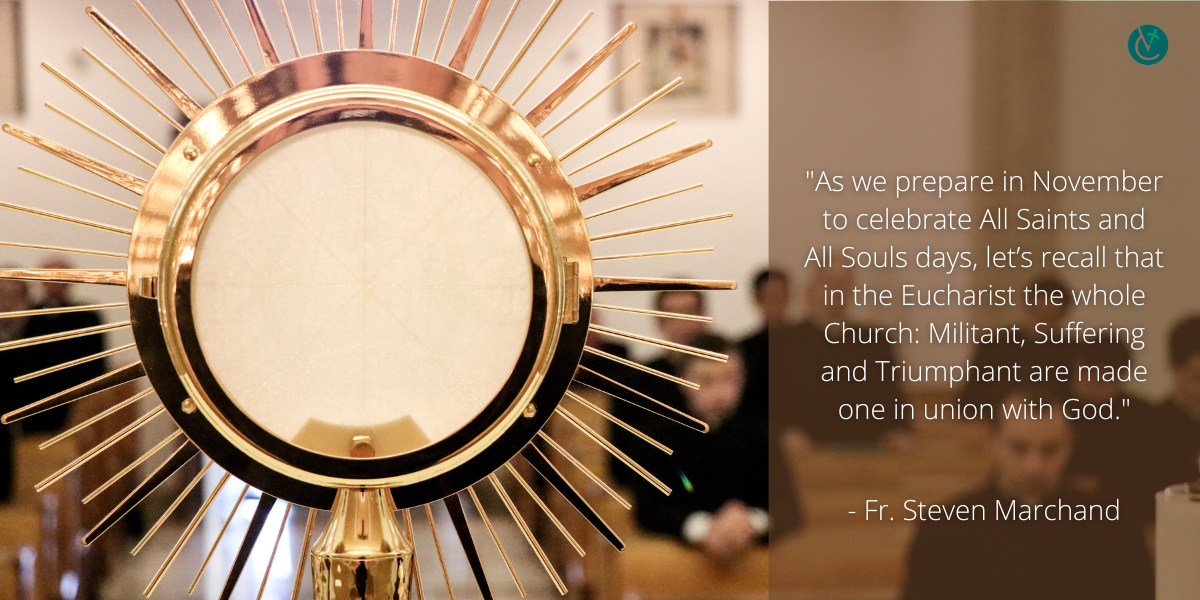
‘The Most Blessed Sacrament’
The U.S. bishops have called for the first Eucharistic Congress in the United States in 48 years to take place in Indianapolis in July 2024. It is part of a larger effort on behalf of the bishops to honor our Lord in the Most Blessed Sacrament and to stir up devotion and faith in the Real Presence among the faithful. A Eucharistic Congress is, if you will, an ad hoc pilgrimage, a pilgrimage not made to a particular shrine or relics of a saint but to Christ in the Eucharist in common pilgrimage with thousands of others.
We are perhaps familiar with the phrase of “Lumen Gentium” calling the Eucharist “the source and summit of the Christian life.” The 1967 instruction “Eucharisticum Mysterium” fleshes this out a bit for us: “It [the Eucharist] is the culmination both of God’s action sanctifying the world in Christ and of the worship men offer to Christ and through Him to the Father in the Holy Spirit.”
Everything that God does in the world finds its first and final expression in the Eucharist! This is why it has come to be called the Most Blessed Sacrament; it is privileged even among the other sacraments instituted by Christ. And yet it is also the culmination of all the worship we offer to the Trinity as children of God. Everything humanity has offered, does offer and will offer to God in the Church is subsumed into this great mystery.
This is why Eucharistic pilgrimages have such a long and strong history within the Church. A pilgrimage is a wonderfully and physically real expression of the spiritual reality of our whole life. That is, we move through our life on Earth, the vale of tears as the Salve Regina has it, in the Church and supported by the saints and angels keeping God and union with Him in heaven before us. In a pilgrimage, we literally make a journey with fellow sojourners to give glory to God and meet Him in the sacraments accompanied by the saints.
Now all of this leads me to something more immediate. We all make a mini pilgrimage every time we attend Mass in our own churches. We never do this alone. As we prepare in November to celebrate All Saints and All Souls days, let’s recall that in the Eucharist the whole Church: Militant, Suffering and Triumphant are made one in union with God.
Thankfully our Catholic faith never lets anything be merely cerebral, only intellectual. This reality is expressed in the Mass in the moment when the priest kisses the altar. Of course, the kiss of the altar expresses our desire we ought to have for God, to get close to Him — the whole purpose of our prayers to begin with.
But what exactly is the priest kissing? “What he kisses, actually, is … a stone that has been consecrated long ago, by a bishop; and the bishop in consecrating it fills up some holes in it with – what do you think? Tiny bits of relics of the early Roman martyrs,” explains Monsignor Ronald Knox in “The Mass in Slow Motion.” “When the priest … kisses the tiny relics, he reminds himself that he is putting himself in touch with the universal Church that is in communion with Rome. All altars, all over the world, are one altar really, the mother-altar of Christendom. Altars have relics in them so as to remind us that we belong to the martyrs of the first century and they belong to us.”
So next time you go “on pilgrimage” to Mass whether by yourself or with friends or family, remember that you are also accompanied by the whole great cloud of witnesses of all the Christian souls down the centuries. We all meet at the one altar of Christ, in the sacrifice of Jesus, the true presence of God among us in the Eucharist.
—Father Steven Marchand is administrator of St. Peter Parish in Vergennes and St. Ambrose Parish in Bristol.
—Originally published in the Fall 2022 issue of Vermont Catholic magazine.

